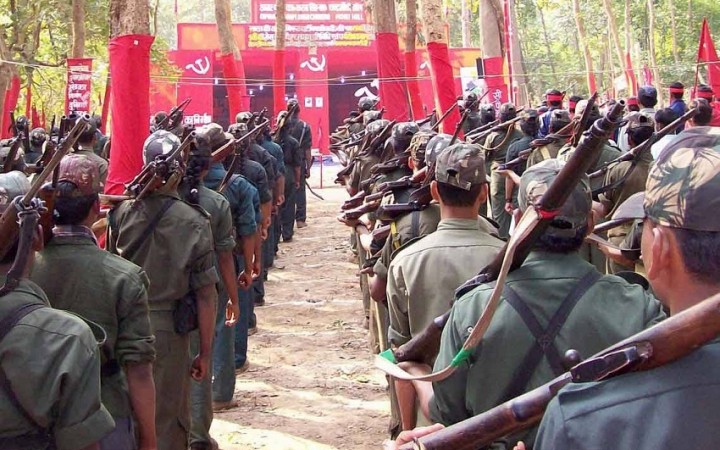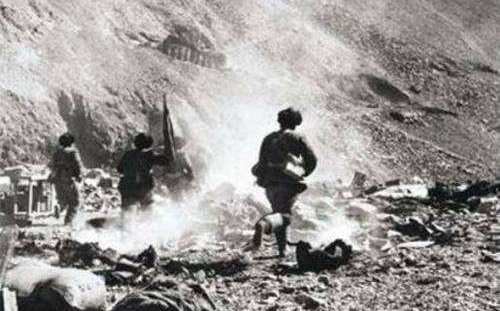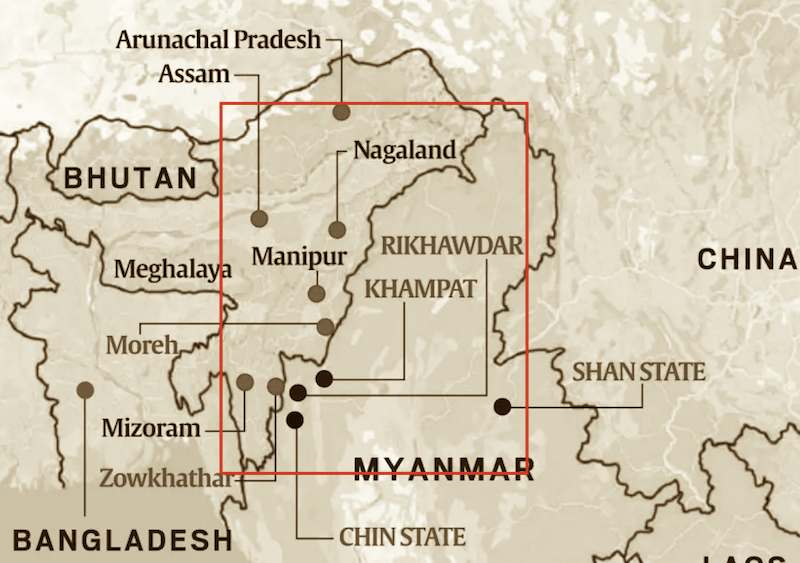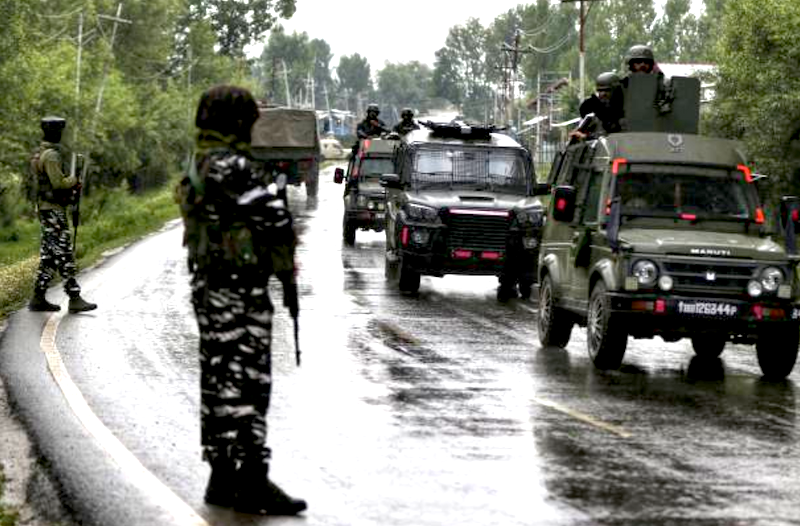 Maoist insurgents in a jungle camp somewhere in the so-called Red Corridor. (File photo for representation.)
Maoist insurgents in a jungle camp somewhere in the so-called Red Corridor. (File photo for representation.)
“He will win who knows when to fight and when not to fight.” ~ Sun Tzu
The above quote by the ancient Chinese philosopher and the author of “Art of War” aptly applies to the anti- Naxalite operation of the Border Security Force and the District Reserve Guard in north Bastar’s Kanker in Chhattisgarh. The successful and very well-coordinated Kanker operation is a milestone in history of Naxalism, wherein the BSF daredevils neutralized 29 Naxalites on April 16.
The operation was very well planned and executed. It not only surprised the Naxalites, who are also referred to as Maoists due to their ideology, but also enabled the BSF and other security forces to achieve moral ascendancy over the insurgents and demoralize them. It will also help security forces to instil a sense of security, trust, and confidence among locals.
The Naxalites have a tradition and history of realistically analysing and brainstorming each operational failure and success, drawing the right lessons, and integrating these lessons into their tactics. The security forces too need to draw the right lessons from the successful operation and not gloss over shortcomings in the euphoria of success.
Read also: Need ethics code for veterans joining politics
Chhattisgarh’s Bastar division is plagued with the menace of Naxalism comprising seven districts – Bastar, Bijapur, Dantewada, Kanker, Kondagaon, Narayanpur, and Sukma. The entire region except Kanker falls in south Bastar.
An analysis of Naxalism in Chhattisgarh brings out that the Bastar division comprises inhospitable and scarcely populated Abujmarh region is highly infested with Naxalism. However, with aggressive spread of the security umbrella and targeted area domination aided by technical inputs, the security forces have successfully contained and constricted the influence zone of Naxalites, resulting in a steady decline in the insurgency. This operation also proved that the Naxalites still had a presence in the Bastar division and posed a threat to the security of the region.
It is a fact that the Naxalite spread and dominance was more pronounced in south Bastar in comparison to north Bastar; and north Bastar was considered comparatively less prone to Naxalite violence. However, this myth stands shattered with the highly successful operation of the BSF in the Hapatola forest division between Binagunda and Koronar villages under Chhotebetia police station.
Read also: India-Myanmar Border – Construct fence and strengthen free-movement regime
The operation has established the fact that tentacles of Naxalism are still intact in the Bastar division and the security forces need to plan with enhanced vigour, restrategize incorporating precaution and aggression in their plans to neutralize the insurgents without any collateral damage, which they might attempt to tarnish image of security forces and put them on defensive. The momentum gained from the success of the April 16 Kanker operation must be maintained.
The history of the Naxalite insurgency is replete with instances wherein the insurgents have avenged security forces’ actions even after considerable lapse of time by inflicting damage to security forces.
Now, rattled by the heavy setback in Kanker, the Naxalites must be waiting and planning to avenge the killing of their comrades. Hence, the need for forces operating in so-called Red Corridor geographical limits especially in Chhattisgarh, Jharkhand, and Odisha to maintain a high level of alertness to thwart the insurgents’ designs. The security forces must maintain alertness in day-to-day activities especially in routine area-domination operations and campus security since the time and initiative rests with Naxalites as they operate in familiar territory and terrain, and have a lot of patience to wait for the right opportunity.
Read also: Bringing Jammu & Kashmir out of the quagmire of militancy
As history shows, March to June is the time the Naxalites choose to retaliate because the People’s Liberation Guerrilla Army, which is the armed wing of the outlawed Communist Party of India (Maoists), observes a period of tactical counteroffensive campaign (TCOC) to fine-tune their drills and impose caution upon security forces.
Now, summers have already set in, the temperatures will peak up to maximum in May and June, followed by monsoon. This will impose limitations upon security forces for long-range dominance operations. This will provide an automatic advantage to the Naxalites being the sons-of-soil operatives. The Naxalites sometimes do extend their tactical counteroffensive campaign beyond June as well.
Therefore, it becomes imperative for the security forces to factor in the Naxalites’ tactical counteroffensive campaign and its tactical ingredients by utilizing terrain and ground advantages to the hilt. In addition to fine-tuning drills, increasing area of influence, imposing caution, inflicting casualties upon security forces, enhancing sway over locals by forcing them to support them, the insurgents put security forces in a disadvantaged position. Locals are also hesitant to support security forces for fear of violent reprisal from Naxalites.
Read also: Attrition in CAPFs – A call for in-depth analysis, proactive measures
What all security forces need to consider while planning operations to stay one step ahead of the Naxalites is to maintain momentum and dominance over the insurgents. The security forces must factor in following inputs in their plans for success:
April to June is the period wherein visibility afforded due to dry weather enhances observation. Dry surface also helps in increased foot mobility of the Naxalites who are well acclimatized to local weather conditions. Rivers and nullahs are shallow enough to provide them unhindered cross-country mobility. This drastically enhances their radius of operations. The crunching and crackling of dry leaves on ground provides advance warning of the movement of the security forces, which helps the Naxalites to discern direction and strength of security forces.
May is the time when the plucking of tendu leaves (used to make bidis) starts and will be in full swing for more than a month. Naxalites aggressively use the locals engaged in plucking tendu leaves as eyes and ears to gain intelligence on movement and activities of security forces. The insurgents sometimes merge with the locals to surprise security forces.
Read also: Command duality in border guarding is against national security
Therefore, the first essential while planning any anti-Naxalite operation is intelligence gathering and execution of intelligence-based operations rather than opportunity-seeking area-domination operations, which tire the security forces that may result in avoidable damage. For this to happen, human and technical intelligence need to be strengthened for gaining real-time information.
As mentioned earlier, the Naxalites have a lot of patience and time at their disposal and show no tearing hurry to inflict damage upon the security forces. They wait for the right time, place, and opportunity for carrying out successful operations. Therefore, before venturing into any intelligence-based operation, give due consideration to past incidents big or small in that area, case studies, and draw from the lessons learned.
Apart from this, carry out an in-depth terrain analysis of area of operation and give due weightage and consideration to the Naxalites’ capability of being lightly equipped, high mobility, sharpness and swiftness of action, effective intelligence and information network, local support and intimate ground knowledge, and impact of these qualities on own operations and how to minimize this impact.
Read also: India-Myanmar border guarding needs a fresh approach
In addition to leadership, which plays a major role in operational success, the next factor is the need for highly trained, motivated young and agile troops for executing operations. Since operations need to be based on intelligence, carry out strength, weakness, opportunity, and threat (SWOT) analysis of available intelligence and plan manpower and weapons accordingly. The manpower must be commensurate to the Naxalites’ strength, like young age profile and equipped with light automatic weapons. Avoid heavy weaponry unsuitable for jungle terrain like AGLs (automatic grenade launchers).
The parties detailed for anti-Naxalite operations must be briefed in detail and there is need to maintain secrecy and disseminate information only on need-to-know basis. The radius of operation may also dictate strength and weapons. Security forces while planning and executing such operations must base operational logistics realistically for success.
According to the annual report of the Union home ministry for 2022-23 (Chapter 11, Para 2.26), the geographical spread of left-wing extremism (LWE) has been shrinking considerably. In 2022, LWE-related violence was reported from 176 police stations in 45 districts spread across eight states as compared to 328 police stations in 76 districts spread over 10 states in 2013. The arc of violence has been considerably restricted with just 25 districts accounting for 90 per cent violence. Certainly, all seven districts of Bastar division and some districts of neighbouring Odisha and Jharkhand form part of these 25 districts accounting for 90 per cent Naxalite violence.
Read also: Gaya Maoist attack exposes system’s apathy towards CAPFs yet again
There is need for the security forces to restrategize their anti-Naxalite operations based upon the hugely successful Kanker operation to maintain their momentum against the insurgency.
Disclaimer: The views expressed in the article are the author’s own and don’t necessarily reflect the views of India Sentinels.
Follow us on social media for quick updates, new photos, videos, and more.
Twitter: https://twitter.com/indiasentinels
Facebook: https://facebook.com/indiasentinels
Instagram: https://instagram.com/indiasentinels
YouTube: https://youtube.com/indiasentinels
© India Sentinels 2024-25










